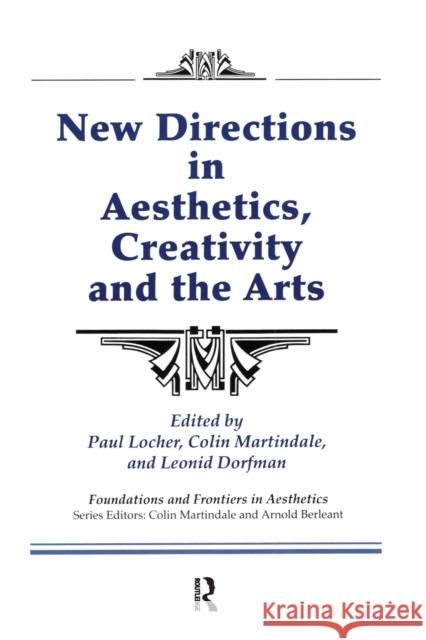New Directions in Aesthetics, Creativity and the Arts » książka
New Directions in Aesthetics, Creativity and the Arts
ISBN-13: 9780415784610 / Angielski / Miękka / 2020 / 288 str.
New Directions in Aesthetics, Creativity and the Arts
ISBN-13: 9780415784610 / Angielski / Miękka / 2020 / 288 str.
(netto: 176,12 VAT: 5%)
Najniższa cena z 30 dni: 183,41
ok. 22 dni roboczych
Bez gwarancji dostawy przed świętami
Darmowa dostawa!
The contributing authors to this book, all pre-eminent scholars in their fields, present their current thinking about the processes that underlie creativity and aesthetic experience. They discuss established theory and research and provide creative speculation on future problems for inquiry and new approaches to conceptualising and investigating these phenomena. The book contains many new findings and ideas never before published or new by virtue of the novel context in which they are incorporated. Thus, the chapters present both new approaches to old problem and new ideas and approaches not yet explored by leading scholars in these fields. The first part of the book is devoted to understanding the nature of the perceptual/cognitive and aesthetic processes that occur during encounters with visual art stimuli in everyday settings, in museums and while watching films. Also discussed in Part I is how cultural and anthropological approaches to the study of aesthetic responses to art contribute to our understanding about the development of a culture's artistic canon and to cross-cultural aesthetic universals. Part II presents new dimensions in the study of creativity. Two approaches to the development of a comprehensive theory of creativity are presented: Sternberg's Investment Theory of Creativity and a systems perspective of creativity based on a metaindividual world model. Also covered are the factors that contribute to cinematic creativity and a film's cinematic success, and the complex nature of the creative processes and research approaches involved in the innovative product design necessitated by the introduction of electronics in consumer products. Part III deals with the application of concepts and models from cognitive psychology to the study of music, literary meaning and the visual arts. The contributors outline a model of the cognitive processes involved in real-time listening to music, investigate what readers are doing when they read a literary text, describe what research shows about the transfer of learning from the arts to non-arts cognition and discuss the kinds of thinking skills that emerge from the study of the visual arts by high school students. In Part IV, the authors focus on the interactive contribution of observers' personalities and affect states to the creation and perception of art. The chapters include a discussion of the internal mechanisms by which personality expresses itself during the making of and the response to art; the relationship between emotion and cognition in aesthetics, in terms of the interaction of top-down and bottom-up processes across the time course of an aesthetic episode; the affective processes that take place during pretend play and their impact on the development of creativity in children and the causes and consequences of listener's intense experiences while listening to music.











